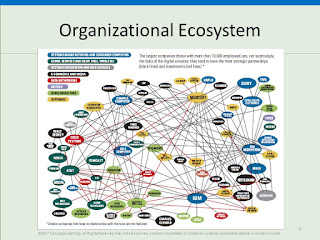DEFINITION OF GROUP
A group is a collection of two or more individuals. A group is an aggregation of people. They interact with each other. They are aware of one another. They have a common objective. They perceive in themselves to be a group.
MEANING OF GROUP
The word dynamics is a Greece word meaning 'force'. Hence group dynamics means the study of forces operating within a group for the social interaction. In this connection two studies of Elton Mayo and his associates and of Lewin are important.
IMPORTANCE OF GROUP DYNAMICS
There are certain preconceptions, representing realities, unrealities, qualities and evils of group but these preconceptions are integral parts of an individual personal philosophy. Such preconceptions may be positive or negative. Negative view represents that: (i) Groups do not exist and (ii) Groups are not good. Positive view is also profess the two things about groups : (i) Groups exist and (ii) Groups are good. These two characteristics of positive view may be called the characteristics of group dynamics.
FIVE PROPOSITIONS ABOUT GROUPS
There are five propositions about individuals, groups and group dynamics :
1. Group do exist.
2. Groups are inevitable and ubiquitous.
3. Groups mobilize powerful forces.
4. Groups may produce good and bad consequences.
5. Groups dynamics permits desirable consequences.
CHARACTERISTICS OF GROUP
1. Two or More Persons : A single individual can not form a group. For group formation, at least two persons are must. There is no specific limit on the maximum number of persons to form a group.
2. Collective Identity : Each group member knows one another. Each member of the group perceives that he/she is a part of group.
3. Interaction : There is an interaction among the members of the group. Each member shares his ideas with others through different communication methods such as face-to-face, in writing, over the telephone and across a computer network.
4. Common Purpose : The members of the group work to achieve some common objective or purpose. In fact, it is the common purpose that binds the group members together.
The various types of groups can be illustrated with the help of the following figure :
TYPES OF GROUP
There are mainly two ways of classifying groups: formal and informal groups. Different kinds of formal and informal groups are listed in the following table. A brief description of each of them follows :
Formal Group
Groups established by the organization to achieve organizational goals are called formal groups. In formal groups, the behaviours that a member should exhibit are stipulated by organization and directed towards organizational goals. It is possible to sub-classify formal groups into the following ones :
Command Group : A command group is composed of a supervisor (manager) and the subordinates who report directly to that supervisor. A command group is determined by the organizational chart. In the Department of Business Administration of a University, for example, the Head of the Department and the other faculty members in the department would comprise a command group.
Table 2.1 : Types of Groups
Formal Groups
|
Informal Groups
|
Command Group
|
Friend Group
|
Task Group
|
Interest Group
|
Project Group
|
Reference Group
|
Comittes
|

Fig. 2.1: Various type of groups.
Task Group : A task group comprises of persons working together to complete a common task. However, a task group can cross command relationships. In a University, for instance, if a student is accused of a campus crime, it may involve interaction among the Head of the Department, Vice Chancellor of the University and the Registrar of the University. Here, it should be noted that all command groups are task groups, but groups can cut across the organizational boundary, the reverse need not be true.
Project Group : Likewise, project groups are formed to complete a specific project. The life of the project group normally coincides with the length of the project. Assigning a research project to a University Professor by the University Grants Commission is an example of project group.
Committees : Committees are usually created outside the usual command group structure to solve recurring problems. The life of a committe may be relatively long or short. An example of committees is a University's Examination Discipline Committee created to solve discipline problems relating to examination.
Formal groups are deliberately structured to subserve organization interest. They serve as means to formal ends. Groups are empowered with the authority from the organization and delegated to the position and not to the person. The status of group is determined by its position on the organization chart. All communications to the group are sent through formal chain of command. They are controlled by the management.





